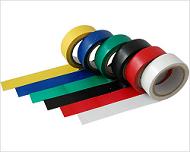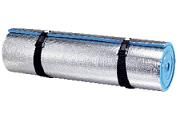electrical insulator

The notion of electrical insulator, as is evident, it is made up of two words: insulating Y electric. To know what an electrical insulator is, therefore, we first need to know what these two terms refer to.

An electrical insulator, thus, is a material that prevents the passage of electricity. This is possible since the material in question does not conduct electricity (it rejects the flow of current). In an electrical insulator, the loads they have difficulties to get around; In electrical conductors, on the other hand, these charges move with great ease.
It is important to establish, entering more fully into the matter, that electrical insulators can be classified into two large groups:
-Inorganic ones.
-Organics. These in turn are divided into natural and plastic or synthetic. The latter we can determine that they are classified into four groups: thermoplastics, hard plastics, cellulose plastics and elastomers.
If the phenomenon is analyzed with greater precision, it must be said that the atoms are constituted by a nucleus with a positive charge (protons Y neutrons), around which negative charges rotate (electrons). These electrons, in conductors, pass from one atom to another when, at the ends of the conductive material, it is applied electric tension, producing the electric current. Electrical insulators, unlike conductors, exert great resistance to this movement of electrons.
The duct tape or insulating tape it is one of the most used electrical insulators in everyday life. It is an adhesive tape made with PVC that is used to cover cables.
There are many materials that can be used because they have a remarkable power as an electrical insulator. This would be the case, for example, of Teflon, glass, wood, ceramic, quartz, rubber or mica.
These are used in numerous electrical installations and constructions to prevent damage or a serious problem in that sense from occurring. However, others are also used, such as fiberglass, cork, pure water, carbon fiber, linen or hemp, and extruded polystyrene.
Electrical insulators can be found in a myriad of places and elements in order to prevent a short circuit from occurring, an installation from being damaged and even that people may be damaged. Thus, we come across them in the following spaces:
-In what are high voltage towers.
-In the conductive cables.
-In electrical installations of various kinds.
-In electronic circuits.
-In footwear of workers who work in different areas where they handle electricity. In this way it is guaranteed that it, in the event of an accident, does not circulate through the body of the aforementioned.




Leave a Reply